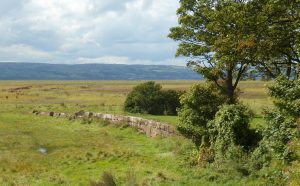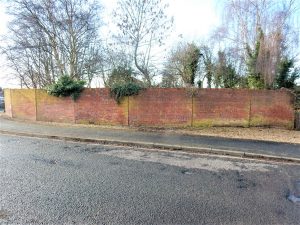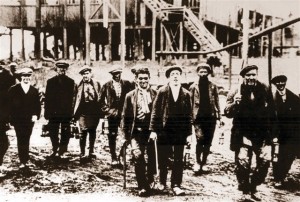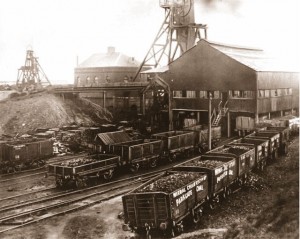The Neston Collieries
Provided graciously by Anthony Annakin-Smith
Although you might not think so from the look of the area today, the peaceful marsh-side area at the bottom of Marshlands Roads, near The Harp public house, was once the largest industrial site in the region.
There were coal mines here, as well as a number of other industrial activities such as lime- and brick-making, with over 300 people employed in the 1920s. The first steam engine anywhere in Wirral and west Cheshire was sited here during the early Industrial Revolution. Great British engineers like James Brindley and George Stephenson were associated with the mine.
Extraordinarily, in the early days underground canals were built beneath the Dee Estuary and man-powered boats were used to bring the coal from distant faces to the shaft on the shore.
The first colliery opened in 1759 and had its heyday in the 1770s and 1780s. Another mine opened on adjacent land in about 1820 and there was bitter rivalry between the mine owners – one of them was happy to deliberately flood his neighbour’s pit and blow up his tunnels! Full details can be read on the Thomas Cottingham vs. Sir Thomas Stanley page.
The rival mines closed in the middle of the nineteenth century. However, following the coming of a railway to the area, a new colliery opened in 1875 and operated under various owners and names until it officially closed in 1927.
Working and living conditions were horrendous. In the early mines, many men worked 100-hour weeks and children as young as nine were employed. Attitudes to safety were very different from today and 42 men and children are known to have died in accidents during the two phases of mining. At the end of a hard shift miners went back to their homes – usually just shacks, described in 1847 as ‘the most miserable mass of hovels’ on the Wirral.
There are still some signs today of the old mining operations. Most prominent is Denhall Quay, the remains of which still jut out into the Dee Estuary. This was built in 1791 and was used to ship coal to North Wales, Ireland and occasionally to foreign countries, as well as inland via newly-built canals.
Also, if you know where to look it is possible to trace the location of many of the shafts that were once in use, including one hidden behind a brick wall in Riverside Walk. Easier and arguably more rewarding to find is The Harp inn! The building was standing in the mines’ earliest days and records show it was a public house for the miners no later than 1813 and probably much earlier. It has several photos on its walls from the mines’ later days.
There is a Colliery Audio Trail telling visitors more about the extraordinary story of the Neston mines that can be downloaded along with the accompanying PDF on the Neston Audio Trails page.
There is also a website dedicated to the Neston Collieries: nestoncollieries.org




